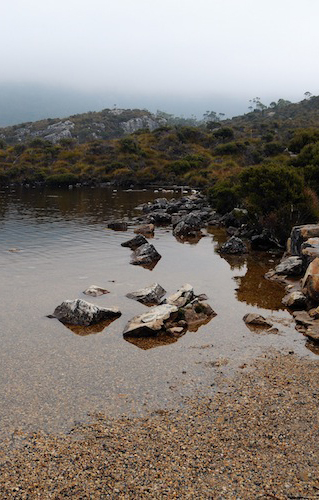
Aquatic Management
Aquatic Ecosystem Management and Legislation
Aquatic ecosystems have been used for managing surface water resources across Australia for over 30 years whereas their use for managing groundwater is a rapidly burgeoning field in Australia. This growing interest can be clearly seen by recent Federal and State government programs that recognise the importance of aquatic surface and groundwater ecosystems.
Accordingly, land and water use activities which impact on Aquatic Ecosystems are required to be managed within a regulatory and licensing framework. Below is a very brief overview of the range of ecosystems and their characteristics, the current legislation for managing these ecosystems and factors that can impact them.
Regulatory and Licensing Considerations
In NSW, the general management of aquatic ecosystems are managed under a number of policies and government departments. Due to the short amount time available today they are summarised as follows:
• NSW State Legislative Components
• Water Management Act 2000
• Water Act 1912
• Threatened Species Conservation Act 1995
• Native Vegetation Act 2003
• Fisheries Management Act 1994
• Draft New South Wales Biodiversity Strategy
• Draft New South Wales Aquifer Interferance Policy
Groundwater Policies
There are several guidelines that relate to groundwater protection and assessment in NSW. The key overarching policy, The NSW state groundwater policy framework document (NSW Government 1997),
outlines the roles of the key NSW authorities in relation to groundwater. The framework’s subordinate policy documents include:
The NSW State Groundwater Dependent Ecosystems Policy (NSW Government, 2002) &
The NSW Groundwater Quality Protection Policy (NSW Government, 1998).
However, there is currently no legislation in NSW that strictly requires developers to consider the subterranean ecosystems in the same way as Western Australia does through its "WA Guidelines for Subterranean Fauna (2003 & 2007)" policy. There are requirements under the Water Sharing plans and the "The NSW State Groundwater Dependent Ecosystems (GDE) Policy" to consider and protect "all dependent ecosystems" and "High Priority GDE’s" through a number of rules and to be managed in similar ways as other aquatic ecosystems.
Other states such as Queensland (DERM), South Australia (SA EPA) and of course, Western Australia (DEC) have requirements for sampling stygofauna in areas where stygofauna are 'likely' to occur to meet the requirements for surveys undertaken for Environmental Impact Assessments in Western Australia, as detailed in the following documents:
i). WA EPA Guidance Statement No. 54, Consideration of Subterranean Fauna in Groundwater and Caves during Environmental Impact Assessment in Western Australia (EPA, 2003);
ii). WA EPA Guidance Statement No. 54a, Sampling Methods & Survey Considerations for Subterranean Fauna in Western Australia (EPA, 2007).
iii) WA EPA Guidance Statement No. 20 Sampling of Short Range Endemic Invertebrate Fauna for Environmental Impact Assessment in Western Australia.
In Queensland DERM has also adopted the WA protocols for sampling stygofauna in Queensland.
"We recommend that all development applications and EIS adopt the WA protocols for sampling stygofauna, as assessments will be consistent with those in other states."
Environmental Protection and Biodiversity Conservation Act (1999) (EPBC)
This Act provides the legal framework to protect and manage nationally and internationally important flora, fauna, ecological communities and heritage places defined as matters of national environmental significance of which there are seven:
i). World heritage sites;
ii). National heritage places;
iii). Wetlands of international importance (or 'Ramsar' wetlands after the international treaty under which such wetlands are listed);
iv). Nationally threatened species and ecological communities;
v). Migratory species;
vi). Commonwealth marine areas; and
vii). Nuclear actions.
In addition, the EPBC Act confers jurisdiction over actions that have a significant environmental impact on Commonwealth land, or that are carried out by a Commonwealth agency (even if that significant impact is not on one of the seven matters of 'national environmental significance'). The Environmental Protection Regulation 2008 supports the EIS process and specifies environmentally relevant activities prescribed under the Act. It outlines matters that administering authorities must consider when making environmental management decisions and also details prescribed water contaminants.






